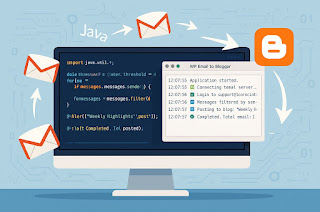# Implementing EDI Integration Using Microsoft Azure Logic Apps
This comprehensive guide provides a step-by-step approach to implementing EDI (Electronic Data Interchange) integration using Microsoft Azure Logic Apps. Azure Logic Apps is a cloud-based service designed to help automate workflows and integrate EDI transactions seamlessly with your systems and trading partners.
---
## **Step 1: Prerequisites** Before starting the implementation, ensure you have the following:
1. **Azure Subscription**: - Sign up for an Azure account if you don’t already have one. - Access the Azure Portal.
2. **Trading Partner EDI Specifications**: - Obtain the EDI implementation guide for the documents you will exchange (e.g., EDI 810, EDI 850).
3. **Existing Systems**: - Identify the systems (e.g., ERP, CRM) that will integrate with EDI workflows.
4. **Data Format**: - Define the data format (e.g., X12, EDIFACT, XML) based on trading partner requirements.
---
## **Step 2: Create a Logic App** 1. **Log in to Azure Portal**: - Navigate to the Azure portal and search for "Logic Apps."
2. **Create a New Logic App**: - Click "Create" and provide the following details: - **Resource Group**: Create or select an existing resource group. - **Name**: Name your Logic App (e.g., `EDI_Integration_Workflow`). - **Region**: Select the appropriate region for hosting.
3. **Open Logic App Designer**: - Open the Logic App in Designer mode to start building your workflow.
---
## **Step 3: Add EDI Integration Connector** Azure provides built-in connectors for EDI transactions, such as AS2, X12, and EDIFACT.
### **For X12 EDI** 1. **Set Up an Integration Account**: - Navigate to "Integration Accounts" in the Azure portal. - Create an Integration Account and link it to your Logic App.
2. **Upload Partner Agreements**: - Define trading partners and upload their details (e.g., X12 schemas, certificates, and agreements) into the Integration Account. - Add: - **Schemas**: Import X12 schema files for the EDI document types you are processing. - **Partners**: Add trading partner details (identifiers, roles, and agreements). - **Agreements**: Configure inbound and outbound agreements specifying EDI protocols and settings.
3. **Configure X12 Connector**: - In the Logic App Designer, search for "EDI X12" and add the X12 connector. - Choose "Receive X12 Message" or "Send X12 Message" based on the workflow.
---
## **Step 4: Design the Workflow**
### **Inbound EDI Workflow** 1. **Receive EDI Document**: - Add a trigger to start the Logic App, such as "When a file is added to Azure Blob Storage" or "Receive AS2 message."
2. **Decode EDI Message**: - Use the "EDI Decode" action to validate and parse the received EDI document. - Map the EDI segments to readable data (e.g., JSON, XML).
3. **Transform Data**: - Add a "Transform XML" action to convert the EDI message into the desired format for your system. - Use a predefined map or create one using Azure’s mapping tools.
4. **Send Data to System**: - Add an action to send the transformed data to your internal system (e.g., SQL Database, Dynamics 365).
### **Outbound EDI Workflow** 1. **Receive Data from System**: - Add a trigger to listen for new data in your system (e.g., "When an item is created in SQL Database").
2. **Transform Data**: - Use the "Transform XML" action to convert internal data into the required EDI format.
3. **Encode EDI Message**: - Use the "EDI Encode" action to package the data into an X12-compliant EDI document.
4. **Send EDI Document**: - Add an action to send the EDI document to the trading partner via AS2, FTP, or another protocol.
---
## **Step 5: Test the Integration** 1. **Enable Logging**: - Use Azure Monitor or Application Insights to track the execution of your Logic App.
2. **Perform Test Runs**: - Simulate inbound and outbound transactions using test data. - Verify that the EDI documents are generated, validated, and transmitted correctly.
3. **Fix Errors**: - Debug any errors using the Logic App’s run history and logs.
---
## **Step 6: Go Live** 1. **Deploy the Logic App**: - Ensure all configurations are in place and move the Logic App to production.
2. **Monitor Live Transactions**: - Use Azure’s monitoring tools to ensure smooth operation and address any issues promptly.
---
## **Step 7: Maintain and Optimize** 1. **Periodic Reviews**: - Review workflows to ensure compliance with updated trading partner requirements.
2. **Optimize Performance**: - Monitor latency and throughput, and adjust Logic App triggers and actions as needed.
3. **Add New Partners**: - Scale your solution by adding new trading partners or EDI document types.
---
By following this detailed roadmap for implementing EDI integration using Azure Logic Apps, you can streamline your business processes, ensure compliance with trading partner requirements, and achieve efficient and reliable electronic data exchange.
.png)


